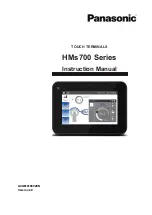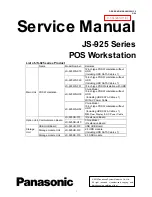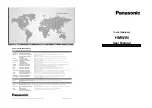
D20/D200 Technical Overview
GE Grid Solutions
78
PRPI-019-3.00-10
GE Information
communications links with all I/O peripherals. It will know immediately if there is a problem
with the link, and can raise an alarm, if necessary.
In the case of Failure Scenario 1, the D20/D200 will still be able to communicate with the I/O
peripherals through D.20 Link B. In the case of Failure Scenario 2, the D20/D200 will
communicate with some peripherals through D.20 Link A, and others through D.20 Link B.
Full D.20 Link Redundancy can be implemented, as shown in Figure 46:
D20/D200
I/O Peripheral
I/O Peripheral
I/O Peripheral
D.20 Link A
D.20 Link B
Failure
Scenario 3
D20/D200
I/O Peripheral
I/O Peripheral
I/O Peripheral
D.20 Link A
D.20 Link B
Failure
Scenario 4
Figure 46 Single D20/D200 with Redundant LAN
This method requires the installation of a D.20 Link interface card (GE part number 540-0207)
on each I/O peripheral WESDAC board. As shown in Figure 46, each D.20 port in the D20/D200
is physically connected to each I/O peripheral. This connection could be implemented in a single
set of cables; however, this would limit the benefit of D.20 Link Redundancy since a cable cut
could damage both links. Instead, it would be more beneficial to implement LAN redundancy
using separate cables and cable routing. A D20 Adapter (GE part number 540-0313), installed at
each I/O peripheral, allows both D.20 Link A and D.20 Link B cabling to be connected to the
peripheral.
In the case of Failure Scenario 3, the D20/D200 will still be able to communicate with the I/O
peripherals through D.20 Link B. In the case of Failure Scenario 4, the D20/D200 will
communicate with some peripherals alternately through D.20 Link A and D.20 Link B, and with
others solely through D.20 Link B.
2.10 Auxiliary Equipment
2.10.1 Universal Protocol Converter
A Universal Protocol Converter (UPC) is required when the D20/D200 will interface with
devices that use synchronous protocols. The UPC converts the D20 asynchronous format to the
device’s synchronous format.
















































